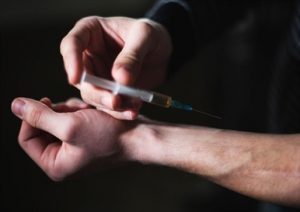
On March 29, 2016, the Department of Health and Human Services released guidance to assist state and local health departments to request permission to use federal funds for Syringe Support Programs (SSPs). This guidance is in response to bipartisan legislation passed in December 2015 that relaxed previous restrictions on federal funds being used for any programs that promote syringe exchange interventions for people who inject drugs (PWID), and is part of the overall federal campaign to address the exploding opioid abuse epidemic in the U.S.
The guidance informs health departments that federal funds may not be used for the purchase of syringes or needles for the purpose of hypodermic drug use. Funds can, however, be used to support other aspects of comprehensive interventions for PWID, such as to pay personnel, for educational programs, Hepatitis C (HCV) and HIV testing, and for the provision of naloxone to reverse opioid overdoses.
In my last blog post, I stated that the government should do a better job in including initiatives that address the increased risk and incidence of HIV and Hepatitis C infections amongst PWID as part of the overall opioid abuse reduction initiative. The relaxed federal stance on syringe support programs and the availability of these funds is a significant benefit to the efforts to reduce the high rates of HCV and HIV infections amongst PWID. This effort falls in line with the call I made in that previous post for the government to implement holistic and practical programs to address the full range of medical, social and behavioral challenges faced by those who abuse opioids. The high risk of acquiring and spreading blood-borne illnesses such as HCV and HIV among injection drug users has borne itself out in outbreaks such as the one that recently occurred in Indiana, where new HIV infections were reported at a rate as high as 22 per week at the peak of the epidemic.
It is encouraging to see the government revisiting its hardline position against syringe support programs. While syringes cannot be purchased with the federal funds, this legislation allows federal dollars to cover expenses that can free up funds from other sources that programs can use to purchase syringes.
It is important not to frame the provision of syringes to PWID as an endorsement of their abuse behavior, but rather as an intermediary step on the way to the overall objectives of reducing opioid abuse and the adverse social and health effects that accompany it. There is no one simple plan that will produce the results of reducing opioid abuse in this country. Opioid addiction is difficult to addicts to overcome, and it takes time and persistence. Providing clean needles to them as a first step will at least lessen their risk of further burdening their health with an HIV or HCV infection, while also allowing SSP staff an opportunity to engage with addicts to build a rapport of trust and understanding that can ultimately lead the user to seek treatment and successfully overcome their addiction. Efforts such as this, that provide practical and holistic strategies, and that multi-task to address multiple public health issues are effective and fiscally prudent strategies that need to continue to be supported and expanded through legislation and budget allocations.



